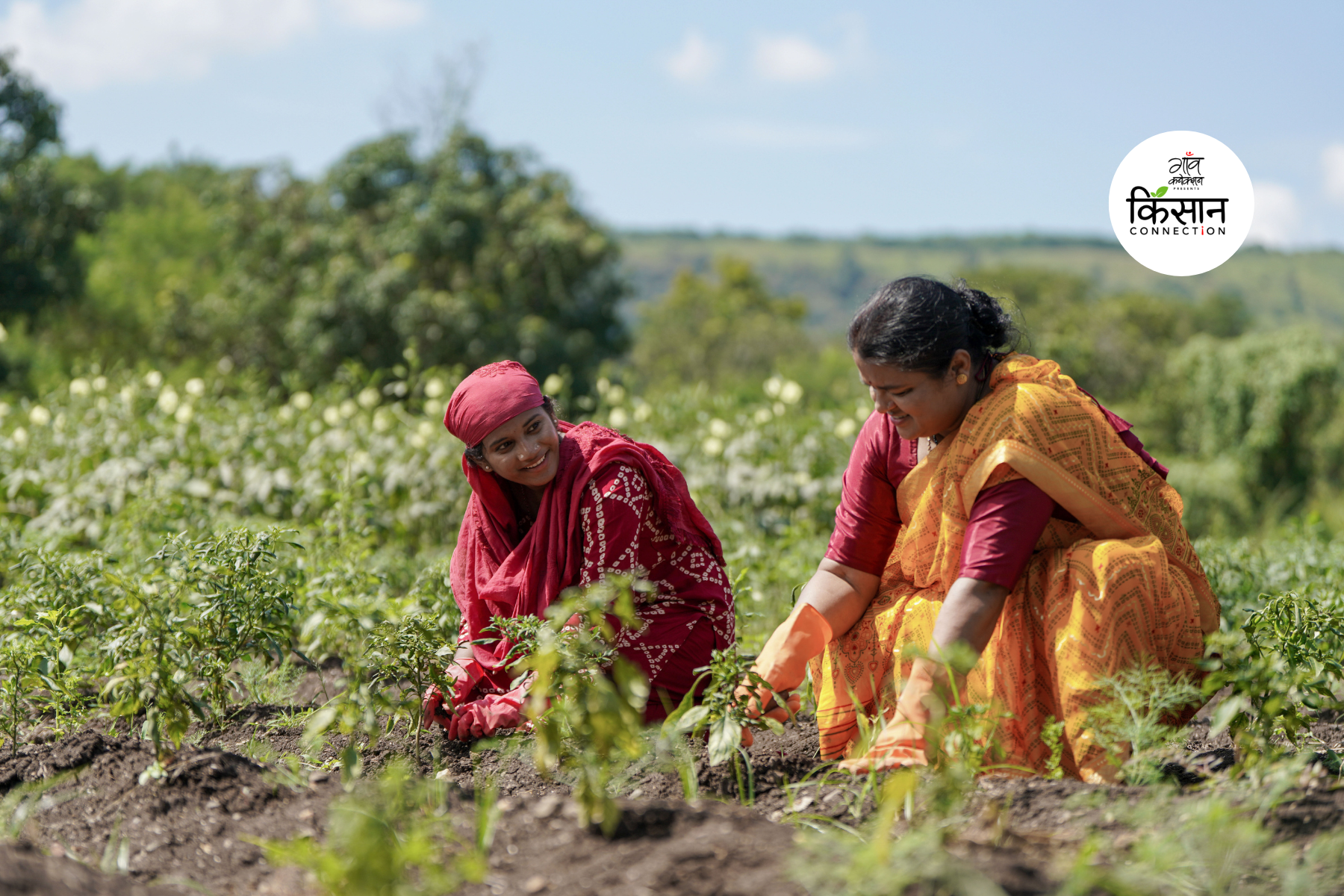Srinagar, Jammu & Kashmir
Accompanied by his two sons aged 22 years and 18 years, Mohammad Ayoub reached Panzath Nag, a freshwater spring in Qazigund, early in the morning. The three men had come walking from their home, one kilometre away, carrying baskets in their hands.
At the freshwater spring, which lies about 70 kms south of Srinagar, they joined a large group of people, young and old, who had assembled there yesterday, on 28 May, to celebrate the annual fishing festival which involves cleaning the spring.
People waded into the Panzath Nag with wicker and plastic baskets and together cleaned the freshwater spring. This is an age-old ritual for many villagers in the districts of Kulgam, Pulwama and Shopian. Once a year, they congregate at the spring and spend the day clearing it of weeds and accumulated silt.
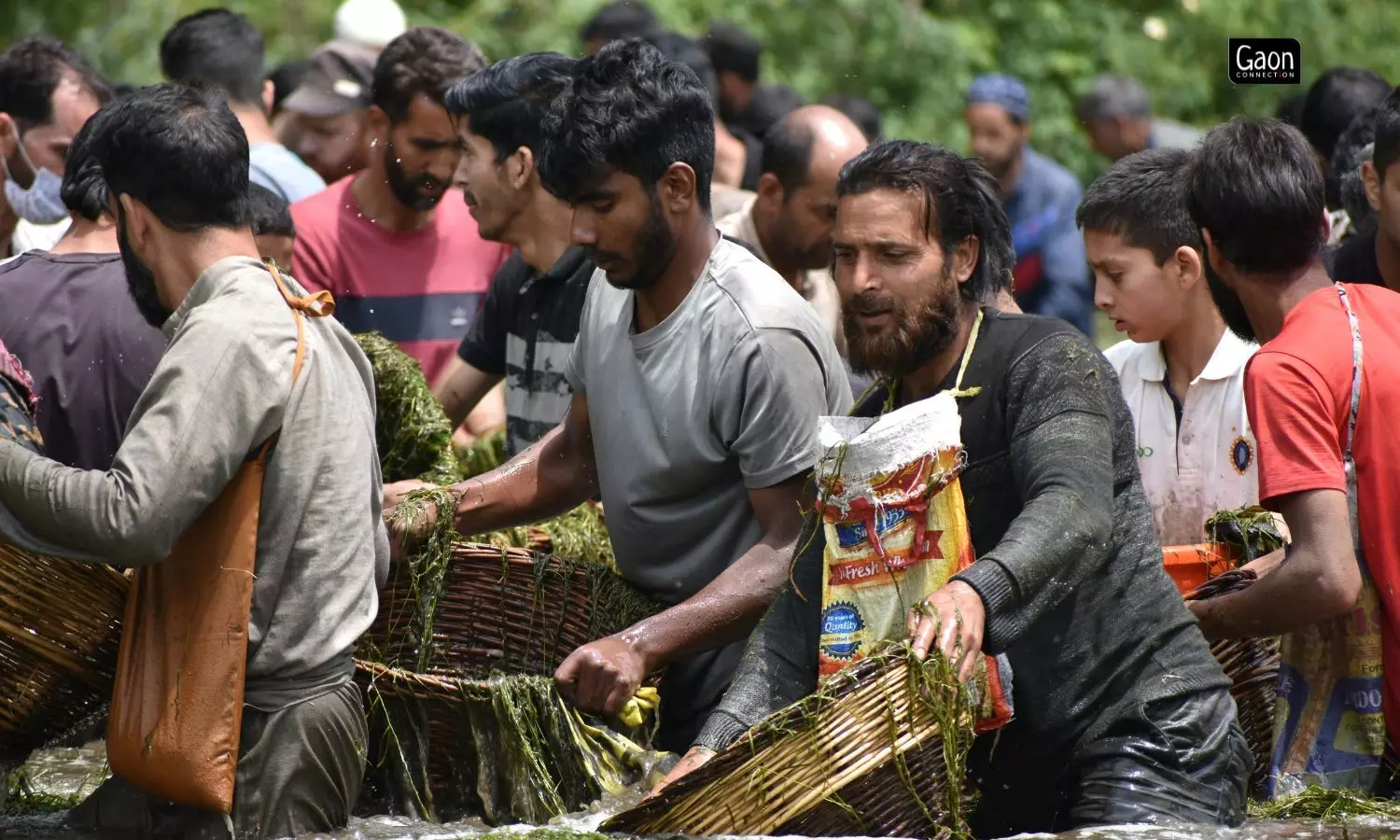
In an age-old ritual in which villagers in the districts of Kulgam, Pulwama and Shopian congregate at the spring and spend the day clearing it of weeds and accumulated silt.
Panzath Nag is located in South Kashmir’s Kulgam district and its annual festival of spring cleaning and fishing is a part of their tradition.
“I have been participating in this annual festival since I was a child. Panzath Nag was just about a kilometre away from my home and I would accompany my father there,” Mohammad Ayoub, a resident of Qazigund, recalled. “It was the 1990s and many people would be there with baskets in their hands, cleaning and catching fish,” the 48-year-old told Gaon Connection.
“Last year, we caught nearly ten kilos of fish but this year, we managed only five kilos. It is usually trout that we catch and take home to have a feast with families and friends,” he said. “There are people who travel from nearly 80 kilometres away to clean the Panzath Nag or just watch,” he added.
Every year in the third or fourth week of May, villagers pick a day when the apple, almonds and walnut orchards are full of blossoms. They clean Panzath Nag, spread across a 500 metres area, and also catch fish. It is a practice they have inherited from their ancestors.
Also Read: Rapid urbanization, climate change increasing water stress in the Hindu Kush Himalayas
Panzath Nag
Panzath Nag is derived from the word ‘Paanch Haath’, meaning ‘five hundred’ in Kashmiri. It is believed the 500 springs lie in a radius of 1.5 kilometres from Panzath village.
The spring finds mention in the ancient texts of Kashmir, namely the Rajtarangrani and Nilamata Purana that were written in the 12th century. It is believed to be the source of many smaller springs.
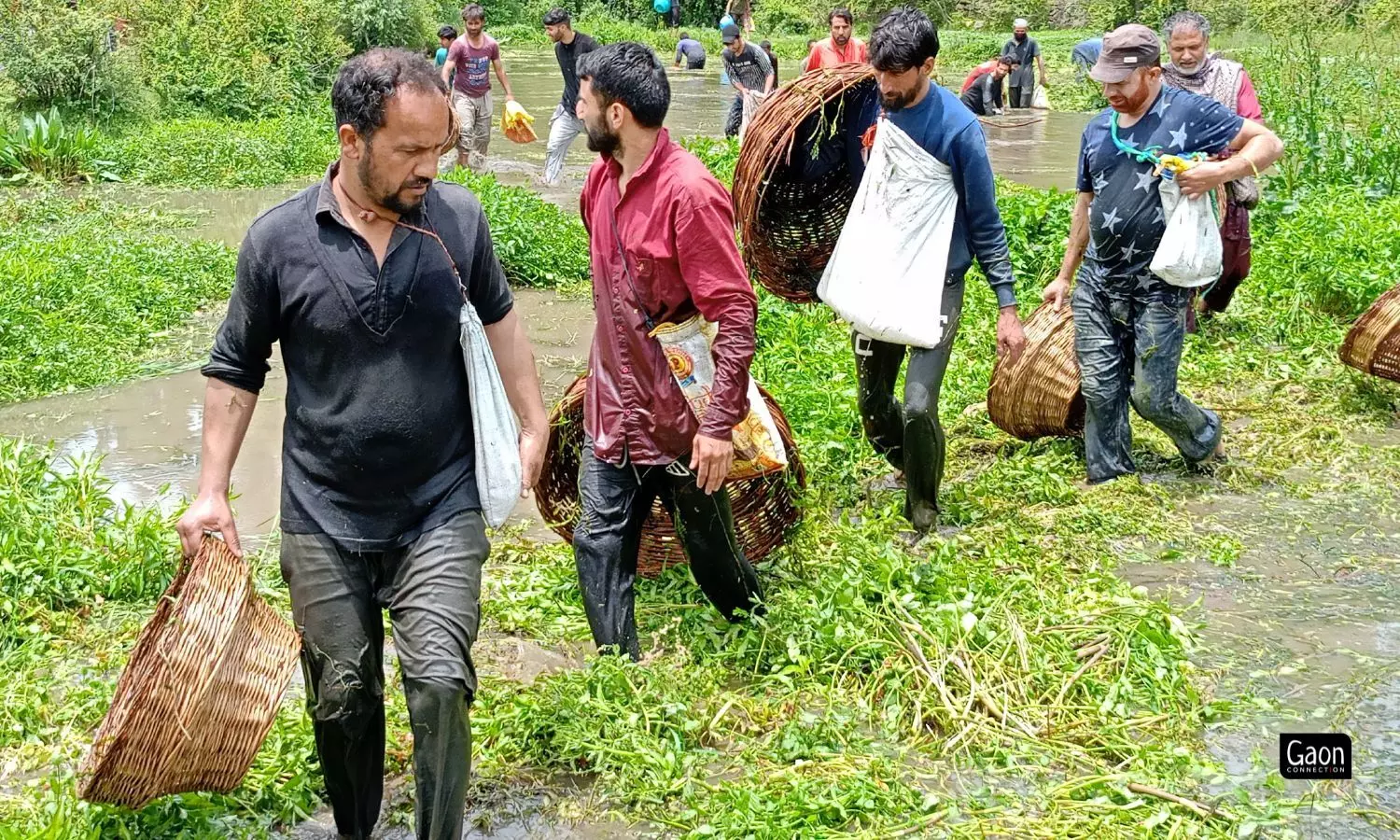
Panzath Nag is derived from the word ‘Paanch Haath’, meaning ‘five hundred’ in Kashmiri. It is believed the 500 springs lie in a radius of 1.5 kilometres from Panzath village.
Panzath Nag irrigates and provides drinking water to over 25 villages of Qazigund including Vessu, Nussu, Bonigam, Babapora, Newa, Wanpora and Panzath.
To mark the day, people also visit the graveyards where they shower flowers over the graves of their departed kin, a practice believed to soothe the departed soul.
Ghulam Qadir, a 75-year-old villager to witness the festival from the banks of spring. “When I was young, I used to catch fish and clean the spring. However, for the last many years, I have only come to watch the others do it, ” a resident of Bonigam Qazigund told Gaon Connection.
“We wait all year for this day. People take home the fish they catch on this day and cook a feast for friends and family on that day,” the villager said.
According to villagers, nobody knows exactly when the festival started. It is believed it was started around 1846.
A community celebration
“The collective fishing-cum-cleaning activity restores the spring to flow clean and free for the coming months of the year. The silt is cleared too. If we stop this practice then water flow to lower channels will be blocked and there will be less water for irrigation,” Ghulam Qadir explained the importance of this annual festival.
For many other labourers like 65-year-old Jana Begum, and her husband, it is a day off from work.
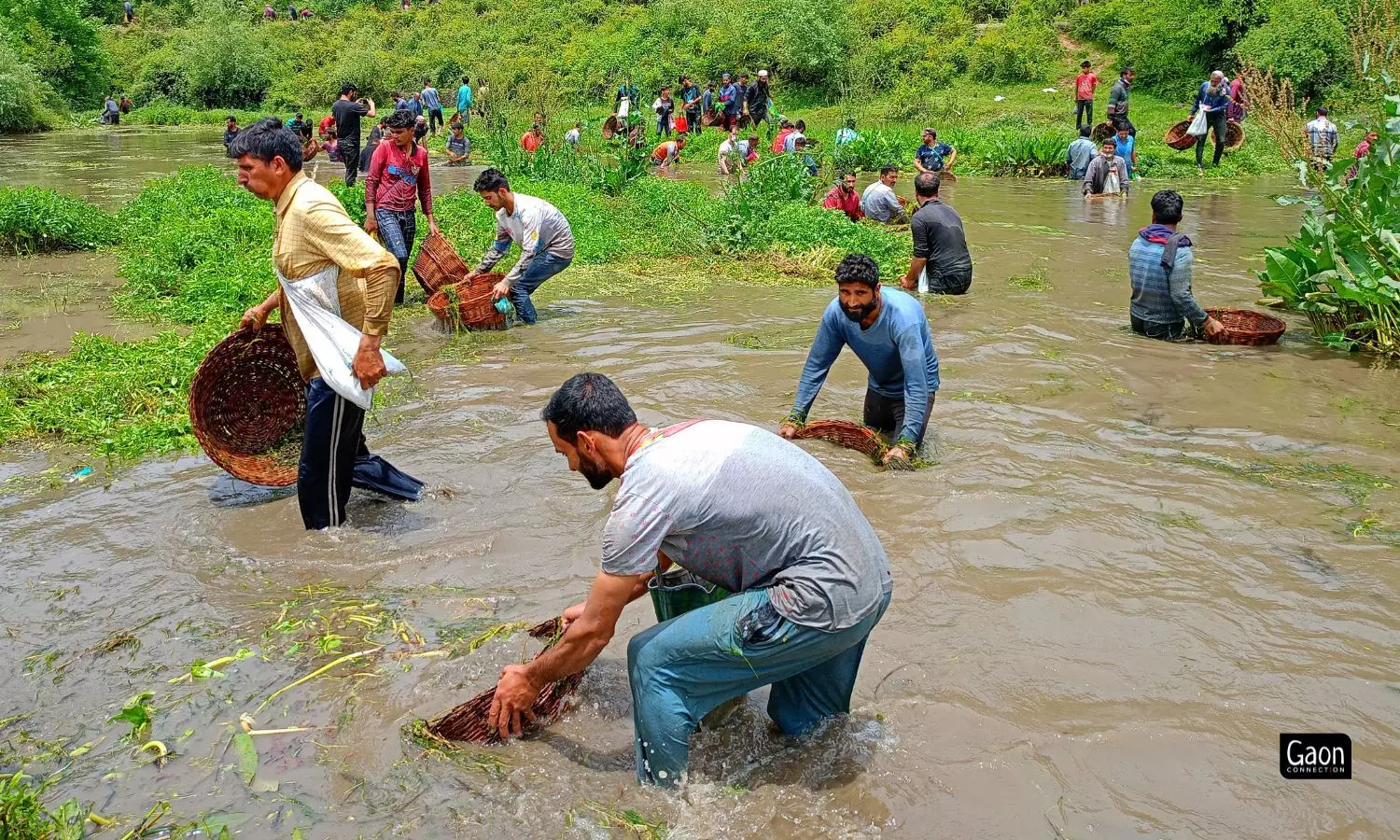
People waded into the Panzath Nag with wicker and plastic baskets and together cleaned the freshwater spring.
“I grew up seeing this practice. It is mostly celebrated on Sunday so employees and students can also participate. Although women don’t clean and catch fish, we watch from the banks of spring. Some bring lunch and tea along and then have it here like a picnic,” she smiled.
For her it is a wonderful stress buster where she can meet and mingle with old friends and relatives she has not met for an entire year.
“This day is a gift to us from our ancestors. And, their way of telling us to preserve and respect our environment,” Jana said.
Also Read: As Spring Goes Missing
Tradition rooted in conservation
Bilal Khan, an environmentalist from South Kashmir’s Anantnag district, the neighbouring district of Kulgam, and is well acquainted with these springs, seconded what Jana said.
“There is an enormous pressure on water bodies due to rising pollution levels. This community initiative has fetched good results. People from other areas should also do something like what happens at Panzath Nag, to preserve more of the water bodies,” he told Gaon Connection.
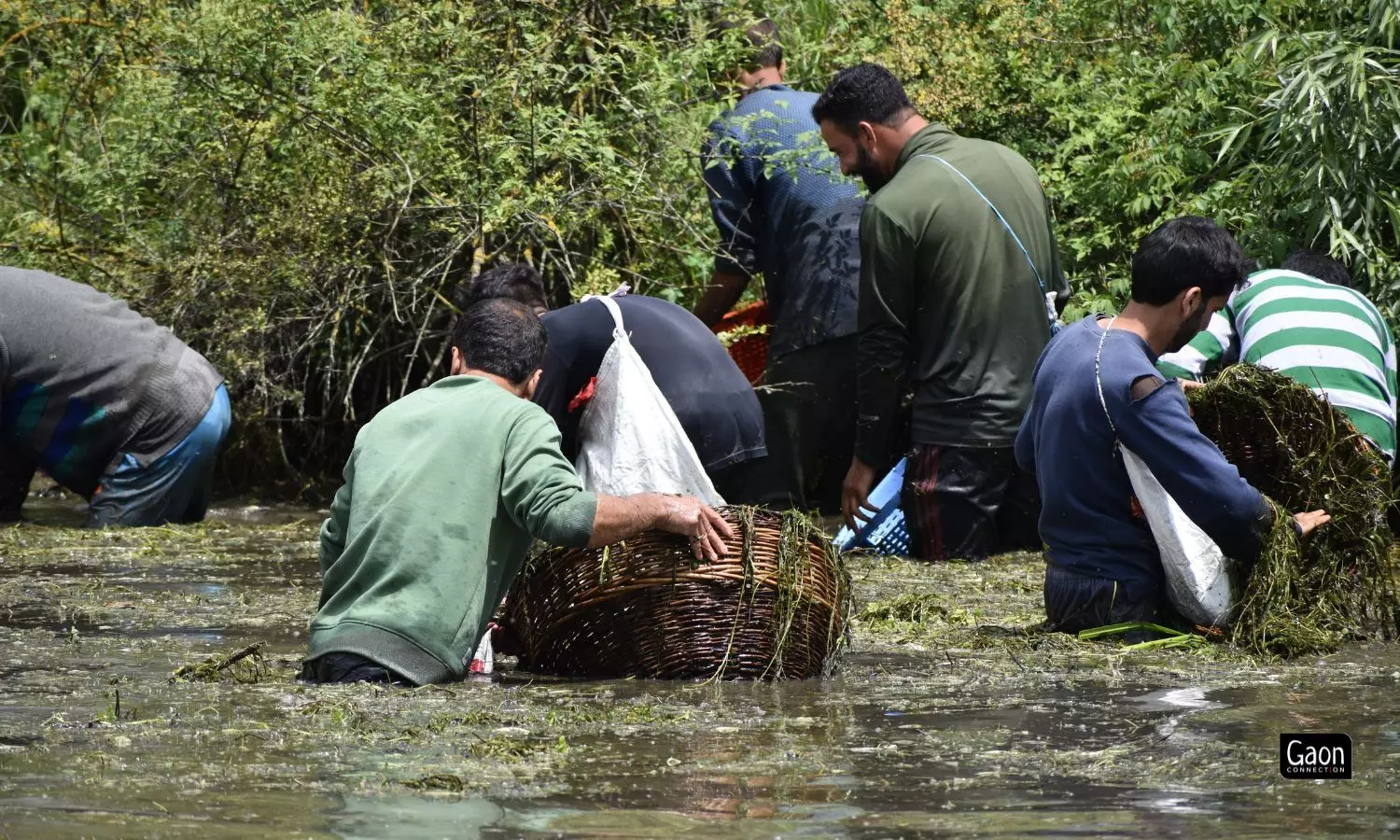
The collective fishing-cum-cleaning activity restores the spring to flow clean and free for the coming months of the year.
More so since such springs provide water to other water bodies such as lakes, wetlands and rivers. As per official data, over 50 million people in the Indian Himalayan region are dependent on springs for their water and food security. But several of these springs have either dried up or are slowly drying up due to encroachment and lack of upkeep.
Also Read: In parched Northeast, a spring of hope
In Kashmir, Bilal Khan said springs have a unique system. “According to various studies, over 80 per cent of spring water in Kashmir is potable even without treatment. This depends on how people preserve these springs in their respective areas,” he added.
Meanwhile, a senior official of the Department of Fisheries, Government of J&K, said the government has been taking various measures to clean the spring. “Since it is a tradition for these people, we can’t stop them from this practice. However, there has to be a ban on catching fish,” the official said, wishing not to be quoted by name.





